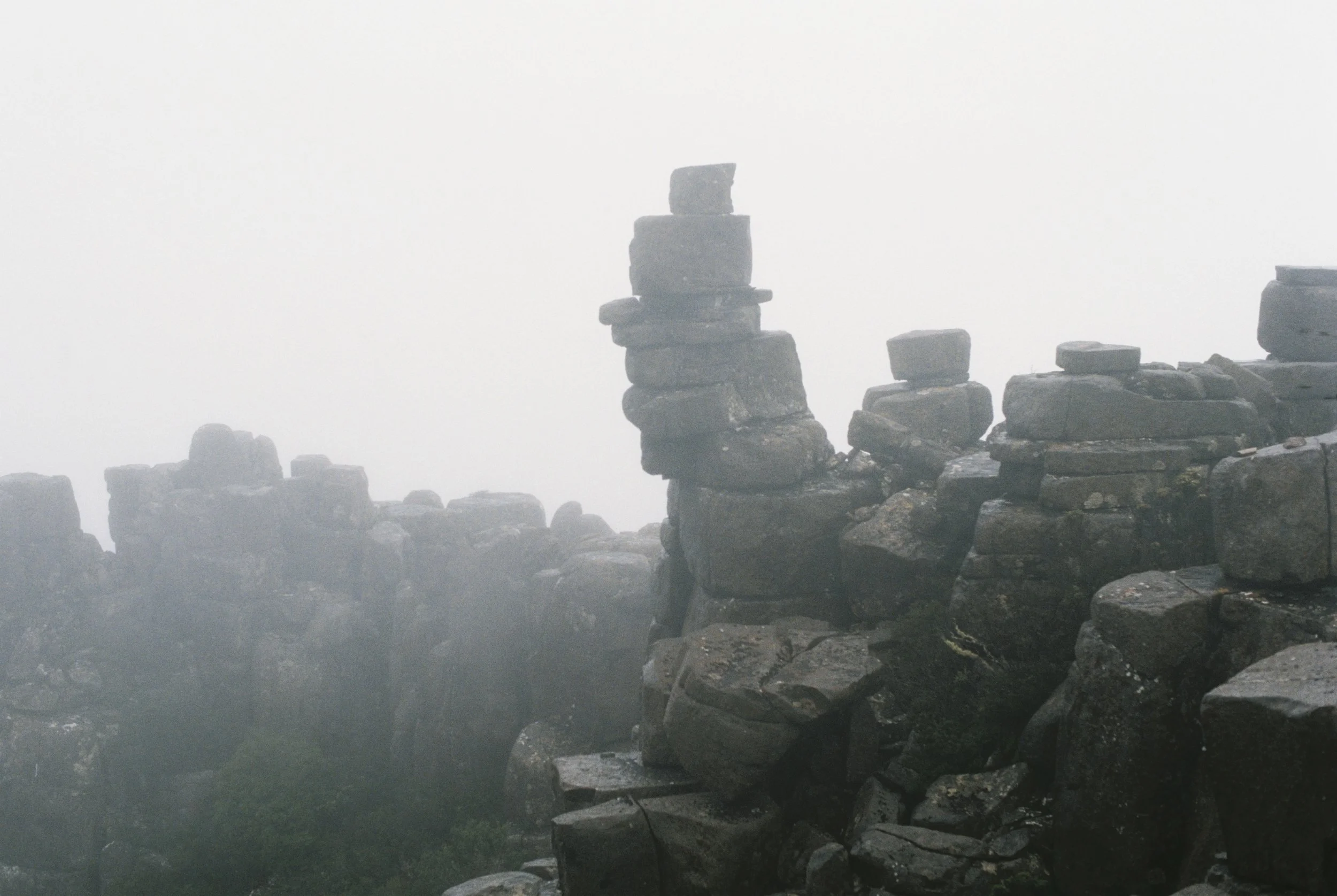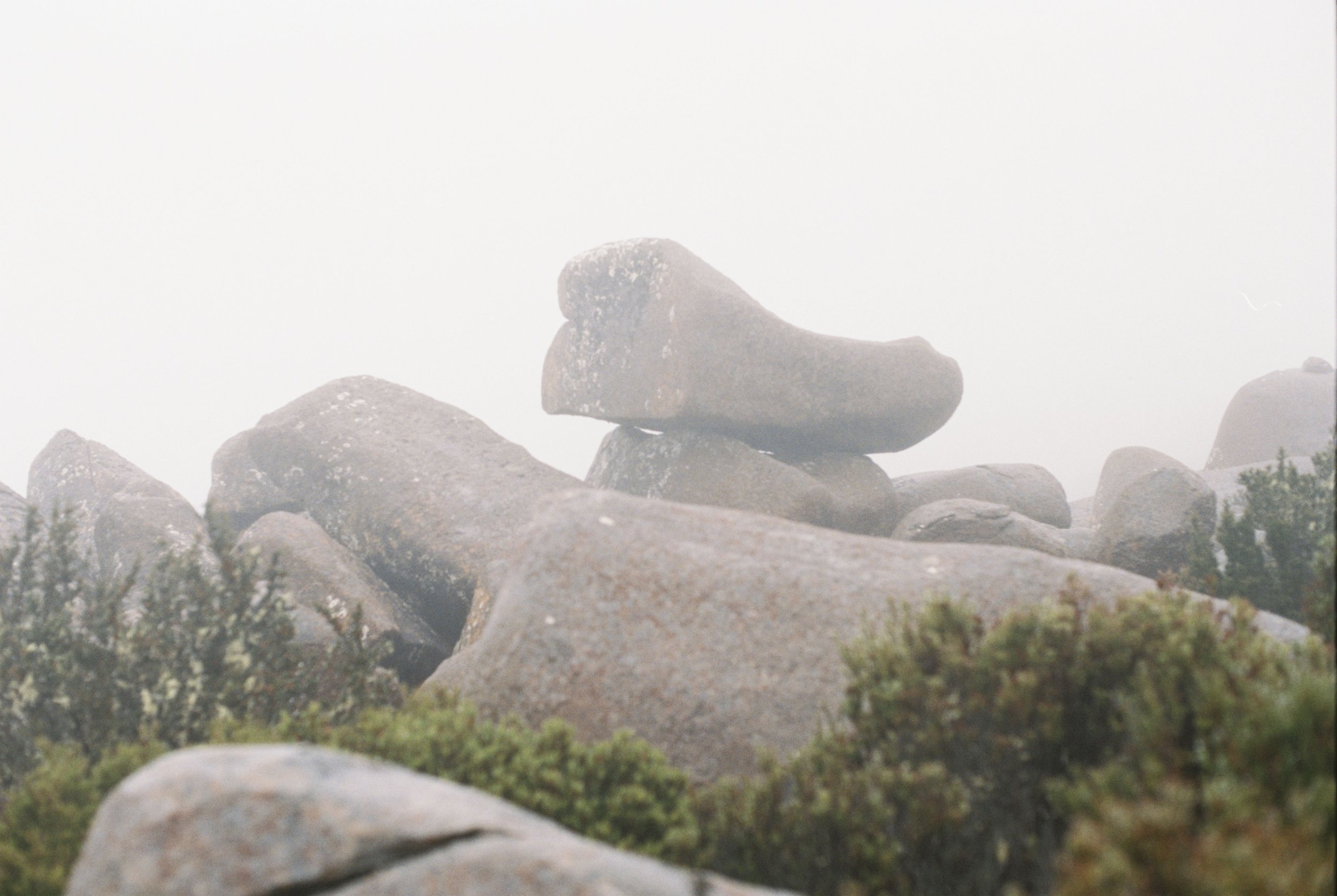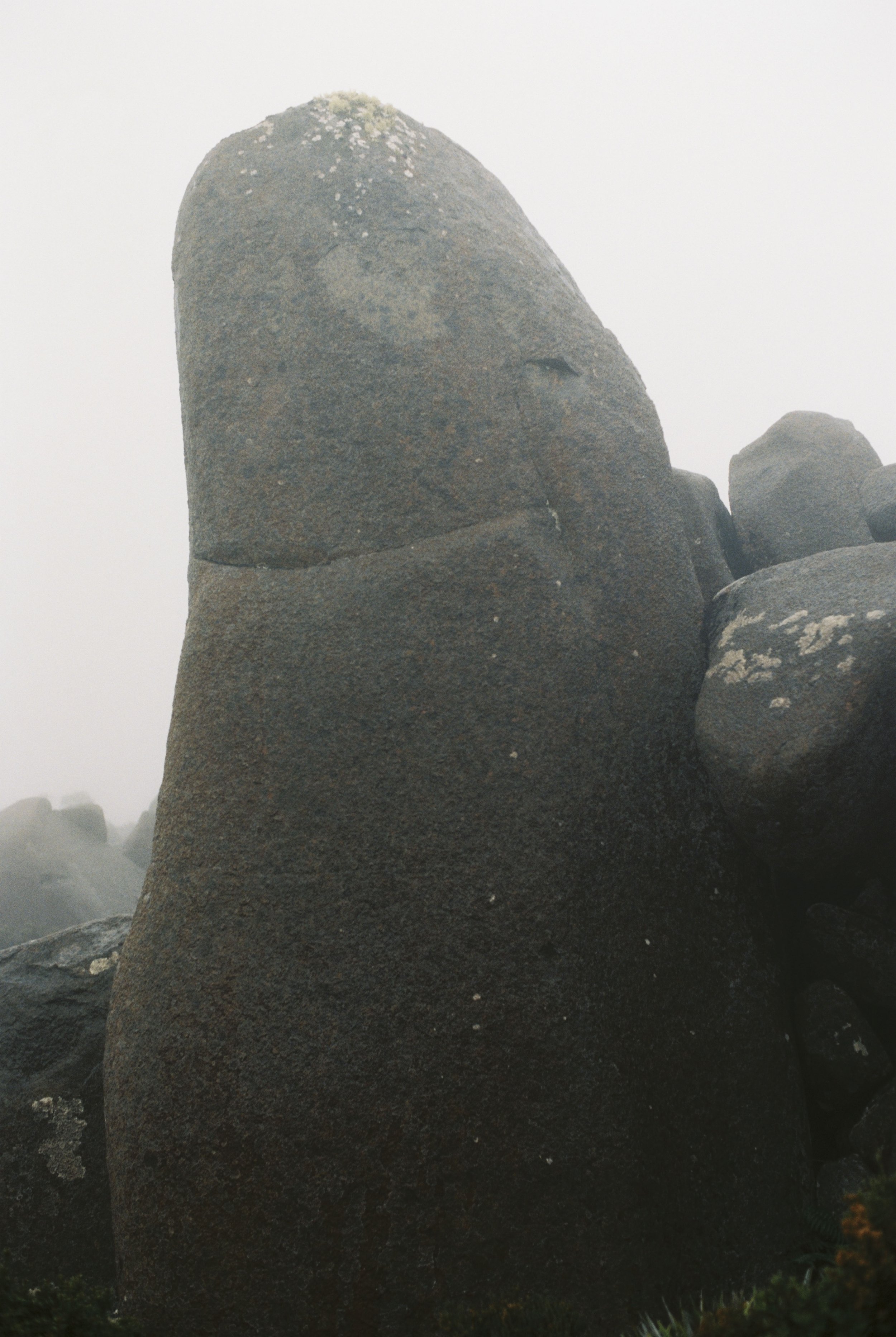… only bad equipment.”
Teetering Stack. Pentax MX, April 2023.
This is a cliche that’s about as overused as plastic bags in the supermarket. And while cliches are well used for a reason, and they do point towards a universal truth, they are also terribly limited in their meanings.
Thanks to the quality of clothing and equipment available to the intrepid adventurer in the 21st century, it is true that most weather conditions can be tolerated. If you prepare for the conditions appropriately, chances are, you won’t have to suffer too much.
The sun lounge. Pentax MX, April 2023.
But to claim there is no such thing as bad weather is bollocks. It’s a sensationalist statement that downplays the reality of the conditions that one may experience in the mountains. There IS such a thing as bad weather.
Weather is not bad in its own right. But given that we view the world through our human lens, with our human limitations, there IS such thing as objectively bad weather, for a human. Conditions that pose a threat to the ongoing existence of human life for example. If you can’t stay still for more than 30 minutes without freezing to death, I’d say you are experiencing bad weather.
I guess we could take a devious tangent here and discuss whether an event that causes the end of human existence is bad or good, but given that most people seem to prefer an ongoing existence to an ongoing death, I am going to run with the consensus and leave a purely philosophical (but worthwhile) discussion for another time.
Friendly Obelisk. Pentax MX, April 2023.
If you can’t pitch a tent because it’s too windy, I’d say the weather is bad. When you are wearing all your daytime layers, including thermals, mid layers, hard shell pants and jacket, mittens, balaclava, and have your hood cinched around your face, moving as fast as you can with a 20+kg pack on your back, and you can still feel your core temperature dropping, I’d say the weather is bad.
There was this time a few years ago when we were traversing the Eliza plateau with my friend Rob Holbrook in what I would say was bad weather. We had started early that day, somewhere on the North-East Ridge, and I say somewhere because I am actually not quite sure where we were, having lost the track up to Pandanni-Shelf the previous day. We had navigated our way past the sinkholes and cave entrances of the North-East Ridge earlier that morning, gotten completely saturated in the rainforest while it gently snowed around us and sidled around the peak of Mt Anne through the frozen boulderfield in poor visibility. Once we hit the track, we thought we would be on the home stretch. But it was late in the afternoon and we were walking in fog and a steady headwind, the temperature just hovering around zero, which meant we remained saturated to our skin in the drizzle.
About halfway across the plateau, I realised I should stop and put an extra mid layer on. But the effort of stopping, taking the mittens off, taking the pack off, taking the jacket off and putting on an additional layer seemed so overwhelmingly difficult that I decided to trudge on. And trudge on.
The plateau seemed endless. At one point, there was a short step in front of me. I went to step up, but my foot slipped off. I tried again, and my foot slipped off again. On my third attempt, I was finally able to step up. But the alarm went off in my head. “Put a layer on now”. So I called to Rob, we found a bit of shelter out of the wind behind a boulder, we stopped and I put that layer on. Even then I must have been borderline hypothermic by the time we reached the point where the track drops off the plateau towards High Camp Hut. Within fifteen minutes of being out of the wind, I was warm again. I wonder how Rob would have reacted that day if I turned to him and said:
Flaking Boulder. Pentax MX, April 2023.
“There is no such thing as bad weather…”




